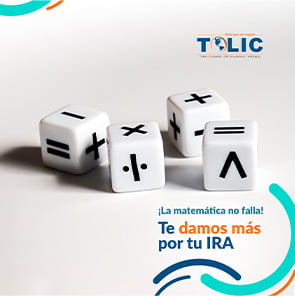It’s never too early to teach children about basic financial concepts. This guide will help you teach them some basic topics that will help them understand money, how to invest it, and how to save it.
PRE-K TO SECOND GRADE GUIDE
Children are very curious, and, at these ages, they’re learning to count, or to add and subtract.
· Learning to use money
If your child has learned to count, you can start talking to them about money. Make sure they see you pay with cash, so that they can become familiar with it. Reserve a few bills in your wallet to pay with when you are with them. Shopping games are also very effective, as they expose them to the exchange of money for an object. These allow them to learn the value of each bill and what it means to hand them all in.
· Learning to make money
It’s good for your child to start doing small chores around the house in exchange for a cash reward. This will help them learn about the value of working and earning.
· Starting to save
You can start by setting aside money in a piggy bank, so they can understand that there are different goals with money, such as spending and saving.
· Understanding the difference between need and want
This topic will teach your child that not everything that is wanted is necessary. Thus, your child will realize that some purchases are more essential than others. In addition, showing them items at home and practicing classifying them as necessary or wanted will help them better understand those concepts.
· Borrowing and accountability
At this age, it’s common for children to want to play with the toys of others. Therefore, they’re taught to share, and it’s important to teach them about the responsibility of borrowing something. You can make a list of all the toys they borrowed, with the owner’s name and the return date. This supports that sense of responsibility and promotes accountability.
THIRD TO FIFTH GRADE GUIDE
During this stage, many children are ready to receive important savings lessons and open their first bank account.
· Priority when buying
Reinforce the concepts of “wanting” and “desiring”. Practice making a home shopping list and numbering the items in order of priority.
· Following a budget
Agreeing on a budget will allow them to make better purchasing decisions. They’ll learn to yield their money and prioritize when buying, so as to not run out of funds. They can also keep track of the budget and expenses.
· Opening their first savings account
When the time comes, discuss the balance to open an account, the monthly fees, and the interest rate. You can introduce these concepts and start the conversation about how money saved can grow.
· Understanding payment methods
Talk about where money comes from and the different ways to get it. There is cash, but we also pay with cheques or with credit cards. These funds come from a bank account, from the same place where we withdraw the cash from at the ATM.
SIXTH TO EIGHTH GRADE GUIDE
In these grades, children have greater opportunities to receive some money. It’s important to explain to them that they should avoid impulsivity with money.
· When you work more, you earn more
You can introduce the concept of entrepreneurship in small businesses that allow them to earn money. For example, they can walk the neighborhood dogs, offer their car cleaning services, or even cut the grass of neighbors’ yards. Open their horizons and show them several opportunities to make money independently.
· Long-term savings
Teach them the importance of starting to save early. This will show them that there are things we cannot get momentarily, but that we must work for a period of time and save and then we will get them.
Don’t stop talking to them about money
In conclusion, having regular conversations about money-related topics is very important for your child to understand how to manage it. Sometimes, parents prefer to keep their children on the sidelines, but this can hurt their future. Don’t overwhelm them with financial concerns, but rather teach them about money in an interesting and fun way.








